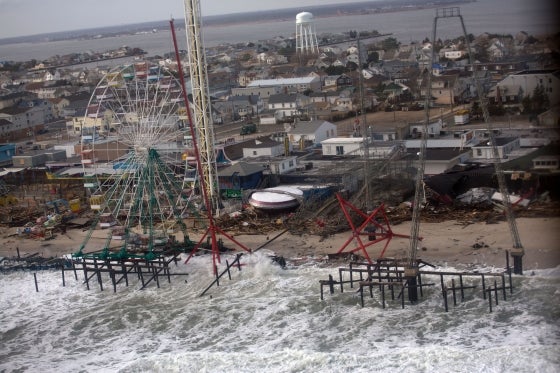The new Federal Flood Risk Management Standard
By Shannon Cunniff, Deputy Director, Water Program, Environmental Defense Fund
This is part one of a two-part series about the new Federal Flood Risk Management Standard. Check back tomorrow for part two.
There has been a lot of misinformation circulating about the new Federal Flood Risk Management Standard established in Executive Order (EO) 13690. In this two-part series, we will shed light on the new standard as well as ways for stakeholders to get involved in the process and make their voices heard.
Louisiana and its citizens are no strangers to flooding and flood risk. Were it not for the devastation caused by the 1927 Mississippi River floods, Congress might not have created a new major flood control program for the U.S. Army Corps of Engineers. So it’s not hyperbole to say Louisiana’s history is steeped in floods.
Louisiana’s broad deltaic floodplains, storied bayous and New Orleans’ own tenacity and resilience to floods define this region. Louisiana knows how to live with water and the threat of flood. Through its Coastal Master Plan, the state is demonstrating to the nation its leadership in flood risk reduction and how creative cross-jurisdictional planning can ensure a vibrant future despite rising seas.
Why have a flood risk standard for federal investments?
However, Louisiana isn’t alone in experiencing flood damages. Between 1980 and 2013, the United States suffered more than $260 billion in flood-related damages. Accounting for inflation, the dollar losses due to U.S. tropical storms and floods have tripled over the past 50 years.
During this period, the federal government has assumed an increasing proportion of the financial responsibility associated with flooding and coastal storms. Federally funded infrastructure – including buildings, roads, ports, industrial facilities and military installations – have suffered flood damages stemming from higher flood levels, higher sea levels and more severe storms. A goal for the new Federal Flood Risk Management Standard is to establish a higher level to which federal actions must be resilient.
This risk management standard represents an important step in coming to terms with more intense storms and sea level rise. The nation and its communities, as well as federal agencies, need to join together to cope with what sea level rise means for our coastal areas, populations, infrastructure and economies.
It’s taken us decades, even centuries, to achieve current levels of development. Now we need to start positioning ourselves to adjust to changing conditions. We need to start building differently and gradually shifting our important assets out of harm’s way.
Leaders in reducing risks
More than 350 communities across the nation, including some in Louisiana, have already implemented standards that account for increased future flood risk, to ensure investments today still provide benefits in a riskier future.
While the federal government is catching up with these communities, it’s been a leader and advocate for floodplain management since 1977, when the federal floodplain management executive order was last updated. Since then, federal agencies have been assessing – usually during their development of an environmental assessment or environmental impact analysis – and minimizing the effects of proposed actions occupying or modifying the floodplain.
The new federal flood risk management standard
The Federal Flood Risk Management Standard supplements the long-standing federal floodplain management Executive Order 11988 approach, by increasing the size of the floodplain and setting a higher level for designing means to lessen flood risks. When evaluating projects, federal agencies must consider:
- The impacts of their proposed action on adding to others’ flood risk.
- Ways to reduce impacts of flooding to structures they fund.
Federal agencies still must avoid the direct or indirect support of floodplain development whenever there is a practicable alternative. Practicality is the pivotal word with much turning on the purpose and need for the action. As the last 37 years demonstrate, federal agencies implementing Executive Order 11988 have been prudent in determining practicality.
Federally funded actions have and will continue in Louisiana’s broad, flat floodplains. They will do so in a manner that ensures federal investments lessen the risk of damaging floods, reduces the cost of flood damages to life and property and, should there be a severe event, rebound quickly to serve their intended purpose.
How we go about developing policies and practices to protect federal investments, lives and property from storms, floods and sea level rise is important. While the new Federal Flood Risk Management Standard is a good thing, there are two areas worth examining around the executive order: process and substance. In tomorrow’s post, we will be examining both of these areas and ideas for improvement.
Check back tomorrow for part two: Improving implementation of the new Federal Flood Risk Management Standard.
